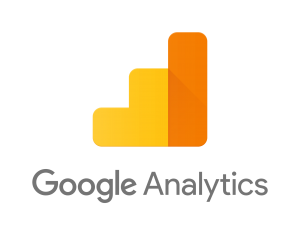Even if you have the best website and a killer online marketing strategy that’s getting tons of customers, you still need to be tracking visitors and behaviour on your site. Why? Firstly, without tracking you can’t tell how these customers are coming to your site, so you don’t know what’s working and what isn’t; you can’t make decision on where to invest your marketing budget best. Even if you’re getting customers online, you may be able to do better, and tracking allows you to analyse that.
Basically, tracking is all about digital marketing optimisation.
So where do you start with site tracking? There’s a lot of software out there, but there are the basics that you should have. And even better, the basics are free.
Google Analytics
 At a minimum your site needs Google Analytics.
At a minimum your site needs Google Analytics.
Google Analytics is a free analytics software suit that allows you to track all visitors on your site. You can see how visitors get to your site, like coming directly, organic (via search engines), social media, etc. You can also see how these users behave, like how many pages they look at, how long they’re there, and if they’re buying.
Installing Google Analytics on your site is the first step to understanding and optimising your digital marketing. It also helps you understand if a campaign is working.
For example, if you’re trying to improve your site’s SEO, you may want to track how many users are coming in via organic search.
Although slightly less important, when setting up Google Analytics, you may as well set up Google Search Console. It’s another free piece of software that let’s you track how your site is ranking on Google. It’s easy to set up and link with your Google Analytics so you may as well.
Facebook Pixel
![]() The Facebook Pixel is less a tracking code and more a cookie that keeps track of users on your site so you can better market to them on Facebook.
The Facebook Pixel is less a tracking code and more a cookie that keeps track of users on your site so you can better market to them on Facebook.
The Facebook Pixel links up with your Facebook for Business account to do a few main things:
- Tracks sales and and general performance of your Facebook campaigns
- Allows for the creation of audiences based on your buyers or site visitors so you can remarket to them
- Allows for the creation of lookalike audiences: audiences that are similar to your buyers or site visitors
And much more.
For example, if you’re running paid Facebook advertising for an online shop, installing the Facebook Pixel allows Facebook to see when a user buys something through your campaign. Further more, Facebook can track every user who buys something (through Facebook or otherwise) so you can create an audience of similar users to market to.
If you’re doing Facebook marketing, you need the Pixel.
Oh, and since Instagram is owned by Facebook, the Pixel works there too.
Twitter and LinkedIn Tracking
 Like the Facebook Pixel, Twitter and LinkedIn have their own tracking codes that work in a similar way.
Like the Facebook Pixel, Twitter and LinkedIn have their own tracking codes that work in a similar way.
However, while almost all businesses, especially local businesses around the Mornington Peninsula, have a Facebook page, a lot of them don’t have Twitter or LinkedIn, or it’s not an appropriate medium for their business. Because of this we don’t push these tracking codes as much.
However, if your business has a LinkedIn or Twitter account, we would suggest installing relevant tracking codes, even if you’re not intending to do paid advertising on the platform.
The reason for this is you may want to do paid advertising in the future, and the codes will continue to gather data even if you’re not using them directly. And they’re free, so why not?
Other Codes for Tracking and Optimisation
You can see that the basics are around Google Analytics and social media, but there’s a lot more out there that we usually like to set up.
Google Tag Manager
A big one that we like is Google Tag Manager (GTM). GTM is less a tracking code and more software that makes it easier to manage your tracking tags and tracking set up. All the codes we’ve mentioned so far require installation into your site’s HTML and, although this is usually easy, sometimes it’s not. GTM is a code that’s installed one time. Then, rather than having to install a new code into HTML every time it’s updated, you just need to put it into GTM. Much easier! If you’re starting from scratch we suggest using GTM.
Newsletter Tracking Codes
If you’re sending a newsletter, you want to see if it’s bringing users to your site and getting sales. A lot of newsletter programs, such as Mailchimp, have tracking codes to better integrate with your website.
Paid or Premium Tracking
There’s also tons of paid tracking software out there, and if you choose to use paid software, there will be a tracking code to install. Some of this software, like Hubspot, has free and paid tiers, and as with everything, has a code to install!
And That’s About It…
The basic tracking codes needed for your site are pretty simple. Really the only thing you “need” is Google Analytics and social media codes. This will be the case for almost all small businesses and many larger businesses as well.
While these codes are easy to set up and install, we appreciate not everyone has the skills or time to do so. But that’s what we’re here for. If you have a question about your tracking, feel free to get in touch.




